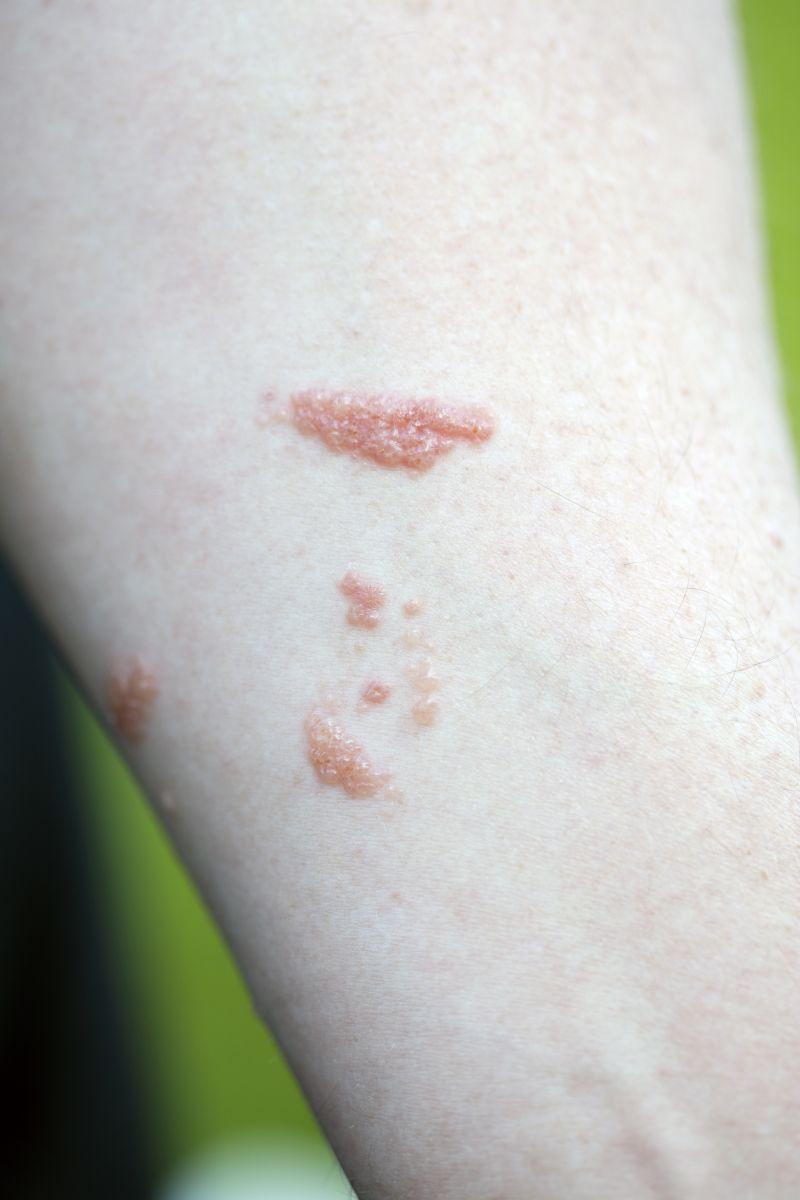
Poison Ivy, Oak and Sumac
Poison ivy, poison oak, and poison sumac are common plants of the genus toxicodendron that contain an oil called urushiol. When urushiol oil touches the skin, many people develop an itchy and inflamed rash due to an immune response called contact dermatitis.
How can I identify poison ivy, oak, and sumac?
Both poison ivy and poison oak grow clusters of three leaves, which has lead to the saying "leaves of three, let it be!" to help remember how to identify the plant.
Poison Ivy
Poison ivy is a vine, and grows almost everywhere in the U.S., except the western coast, deserts, and at high altitude. Its leaves are usually light or dark green, and turn bright red in the fall. The stems are round, slightly hairy, and do not contain thorns.
Poison Oak
Poison oak grows in PaciDc and Atlantic coastal regions, and can grow as a shrub or a vine, with leaves mimicking the size of plants in its vicinity. Like poison ivy, its leaves are light to dark green in the spring, yellow-green in the summer, and red in the fall. Poison sumac is not as common as poison oak or poison ivy, and usually grows only in wetlands. Poison ivy, oak, and sumac contain urushiol year-round. Even dry or dead leaves and stems contain the oil and can cause a rash.
What are the symptoms of urushiol contact?
The primary symptom is itching. Symptoms vary greatly depending on your sensitivity to the urushiol oil. Most adults will get a rash if they are exposed to urushiol, but some are not allergic and will show no symptoms. Many people develop progressively stronger reactions with subsequent exposures to plants containing urushiol. Urushiol rashes are characterized by itchiness, redness, blisters, and streaking. Contrary to popular belief, blister urishol rashes are not contagious and will not spread urushiol to other parts of the body. Rashes usually take 4-7 days to develop after exposure to urushiol, and may persist 1-2 weeks, although some rashes last up to 5 weeks. Ingesting or inhaling burned urushiol can lead to serious systemic symptoms, and may require medical attention.
Why do I get a rash from poison ivy, oak, and sumac?
Urushiol is an oily resin found on all toxicodendron plants. The oil can very easily adhere to anything it comes in contact with, including skin, pet fur, and clothing. When it touches your skin, it chemically changes the shape of proteins in your skin cells. In some people, the immune system does not recognize these cells as being parts of the body, and launches an immune attack, treating the skin cells as if they are foreign invaders.
What should I do if I am exposed to poison ivy, oak, or
sumac?
If you are exposed to a toxicodendron plant, you may be able to preven the allergic reaction if you wash the exposed skin thoroughly with cold water and soap. Also wash clothing that has been exposed separately from other laundry in hot water. If you develop a mild-to-moderate rash, topical corticosteroids, such as hydrocortisone may help alleviate symptoms, although prescription-strength formulations may be necessary. Antihistamines, such as diphenhydramine (Benadryl®) may also help the itch. Oral steroids, such as prednisone, may be prescribed for severe cases or those that involve the face, eyes, or genitals.
